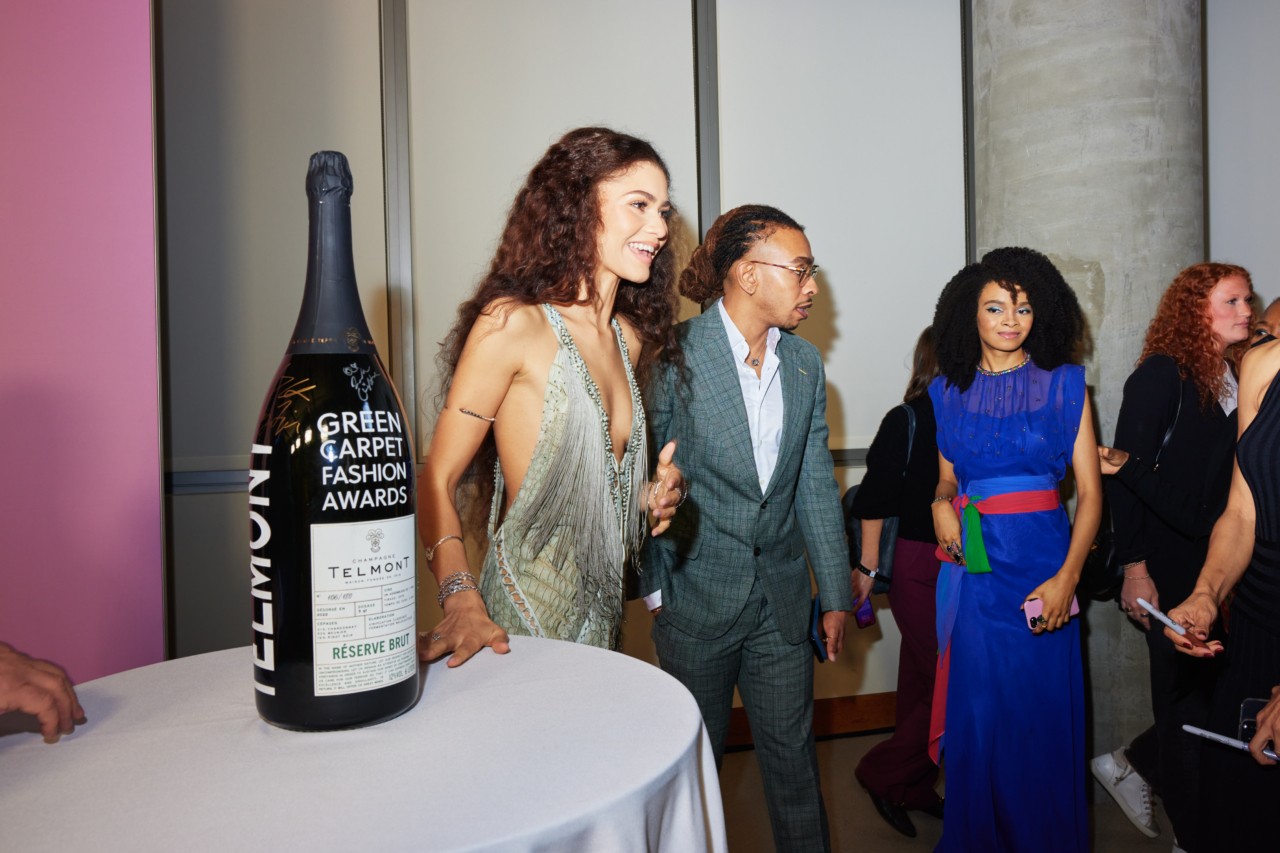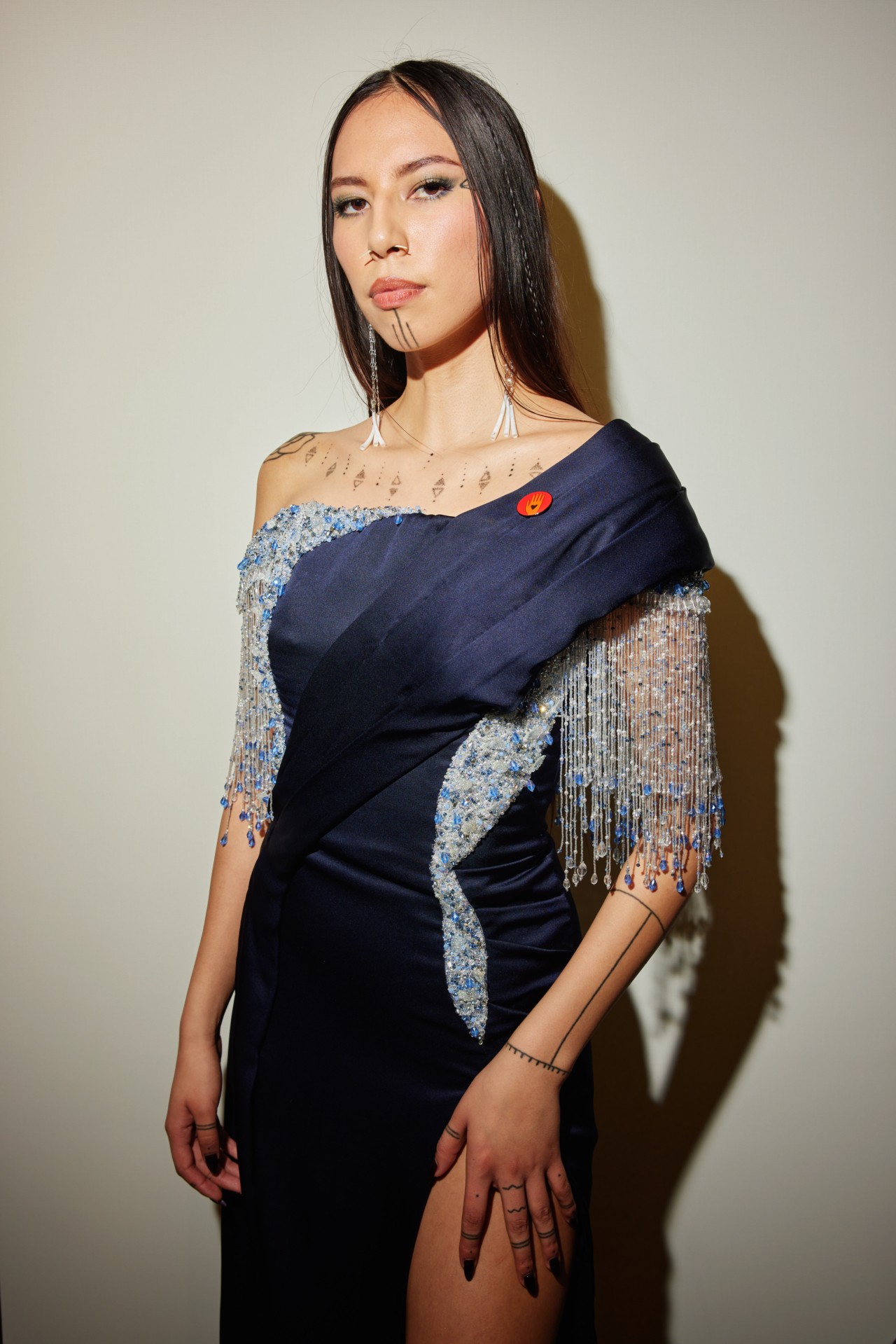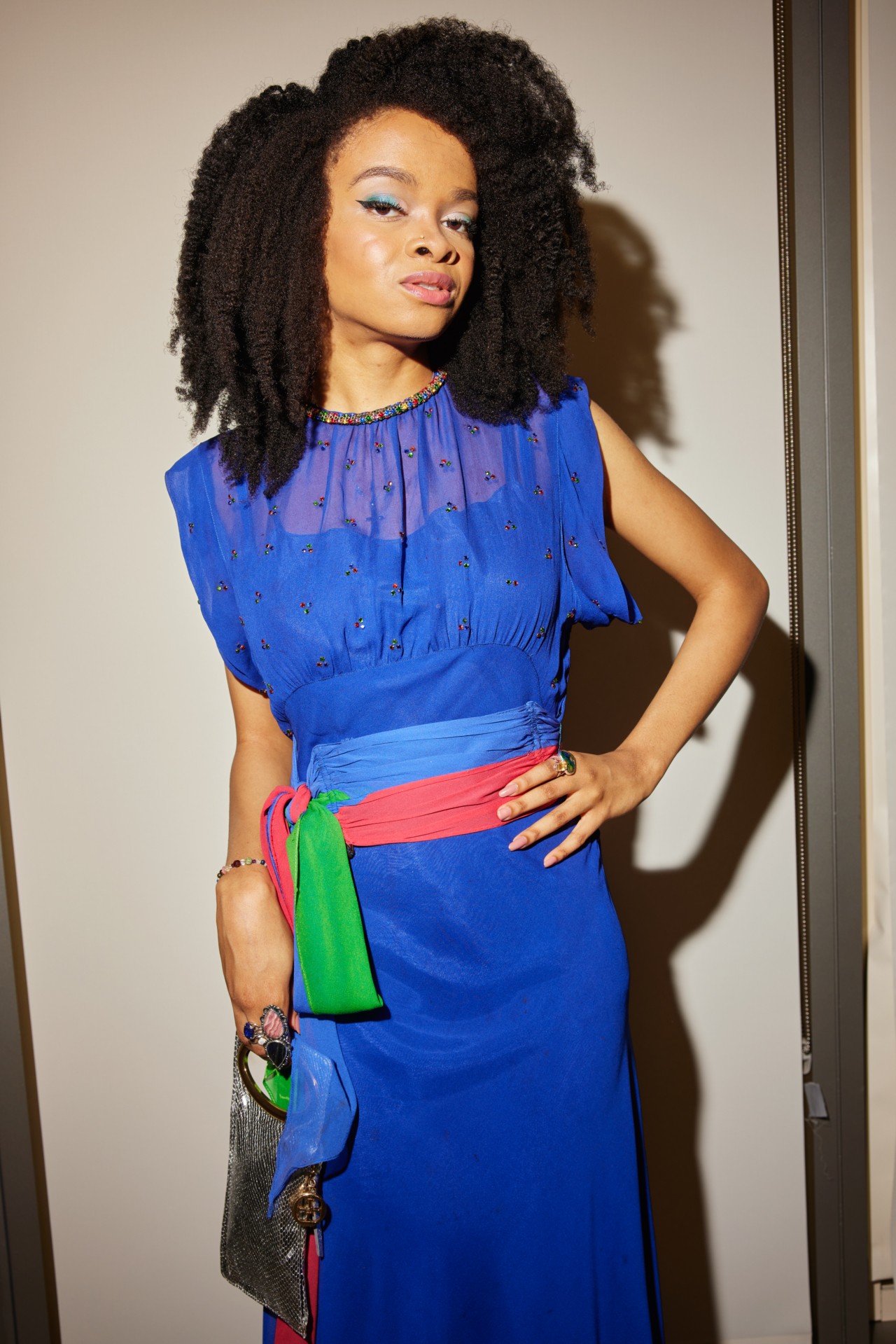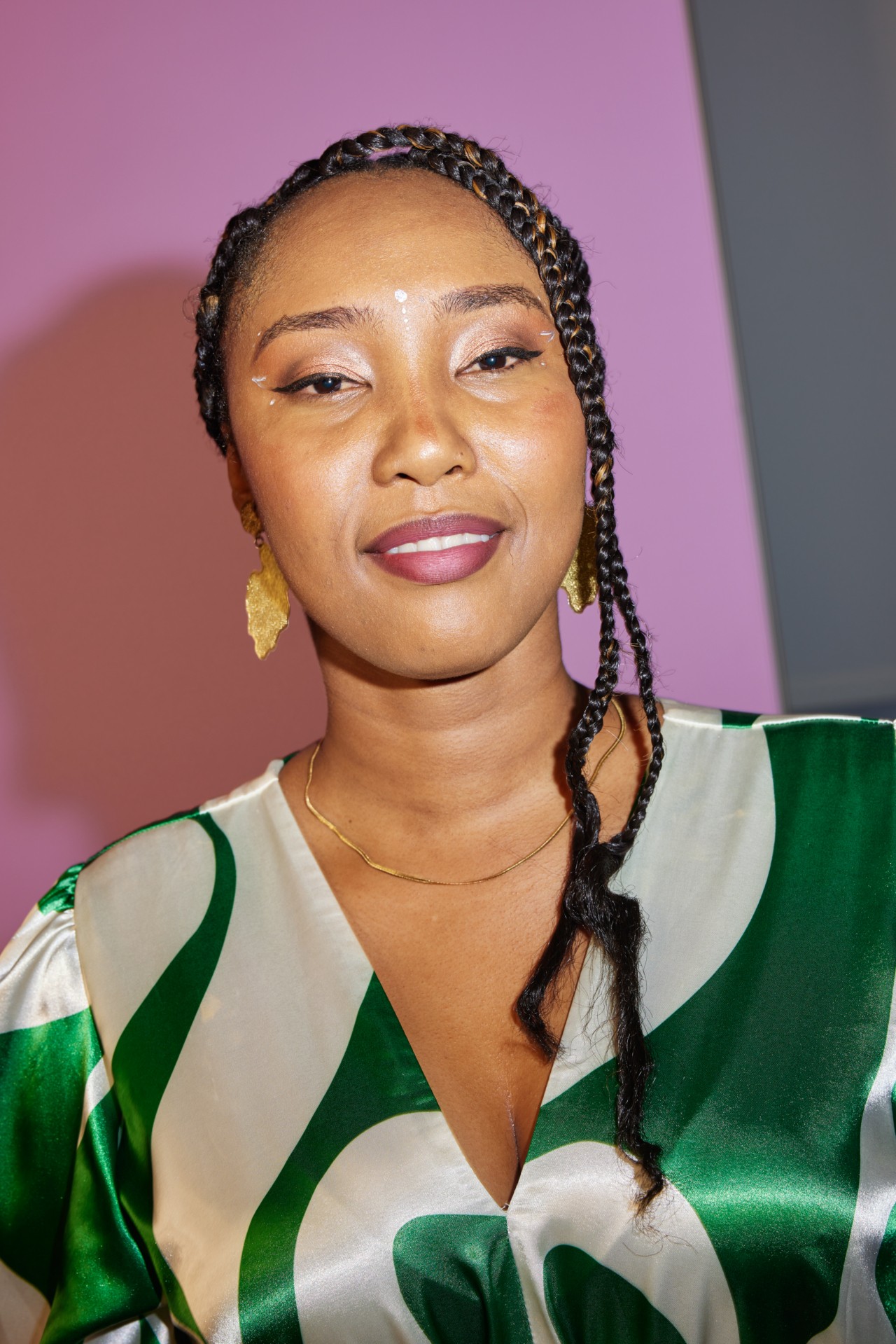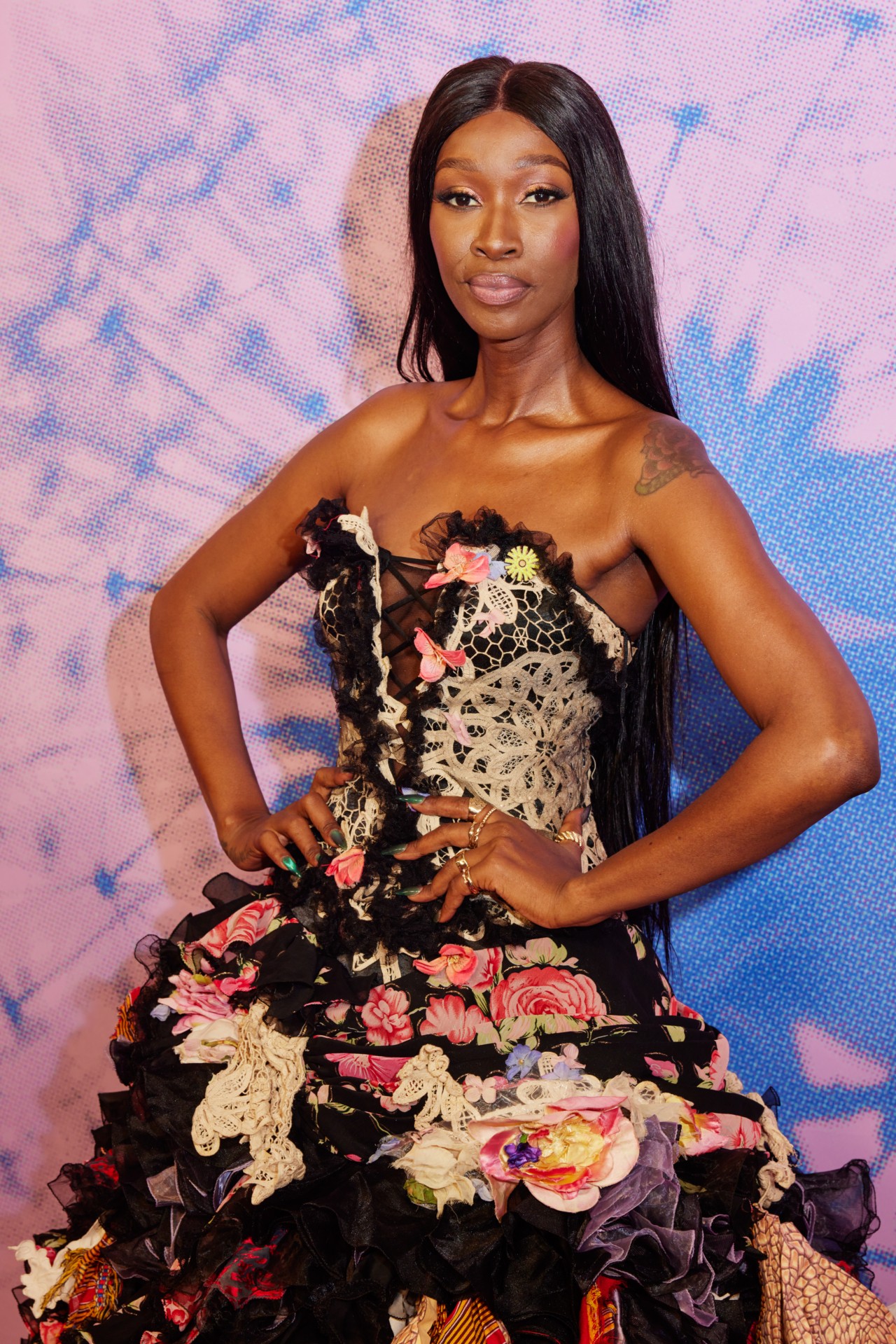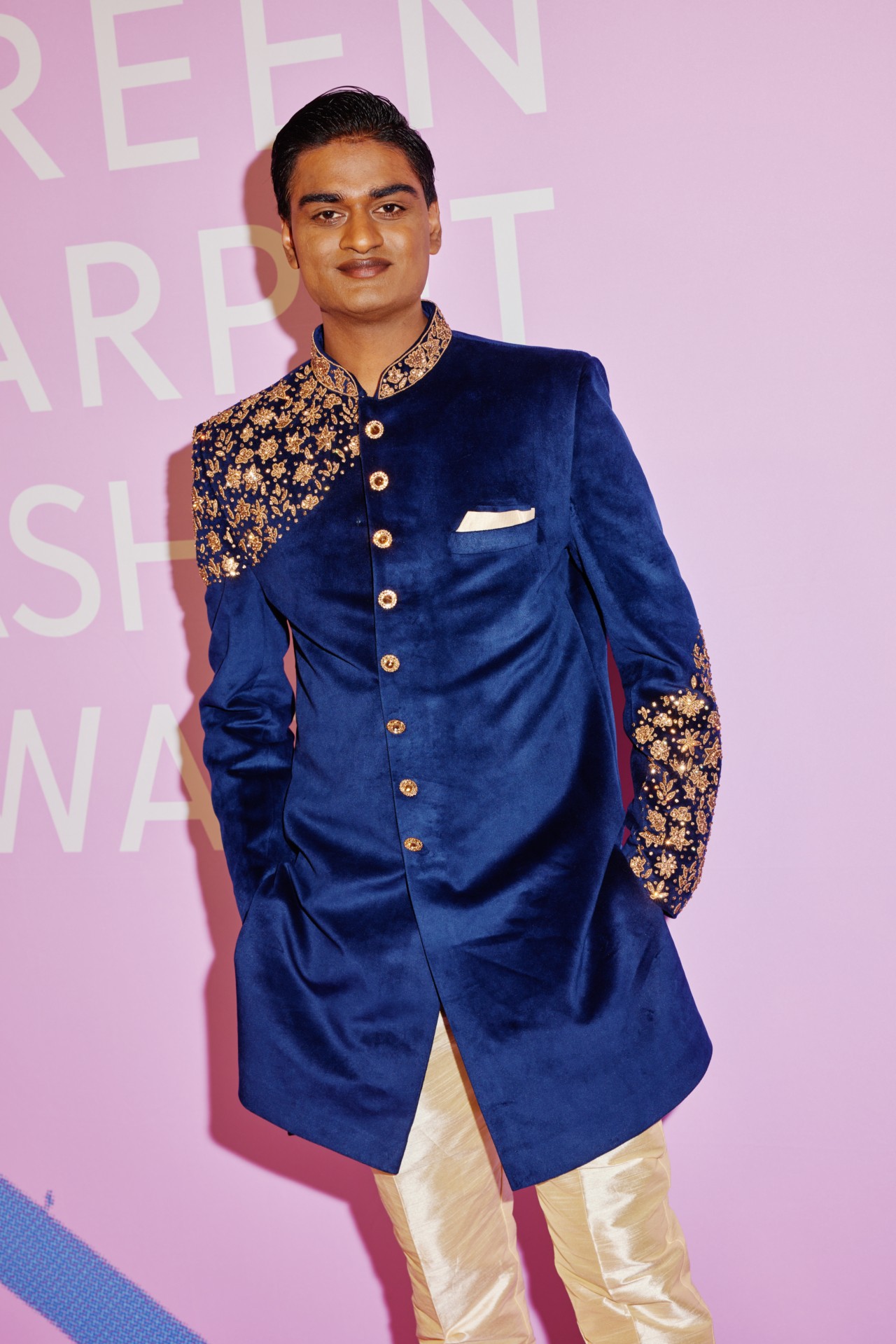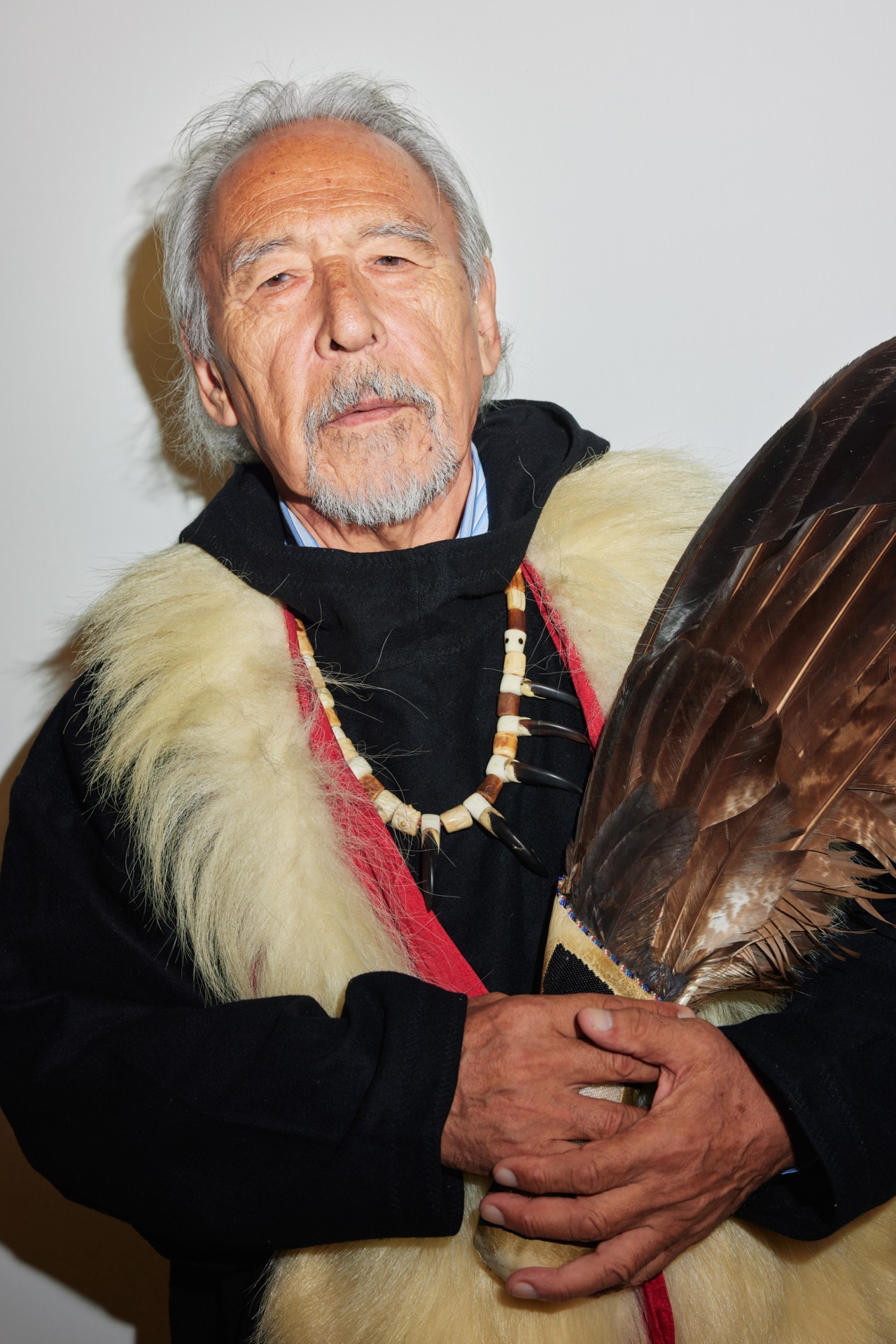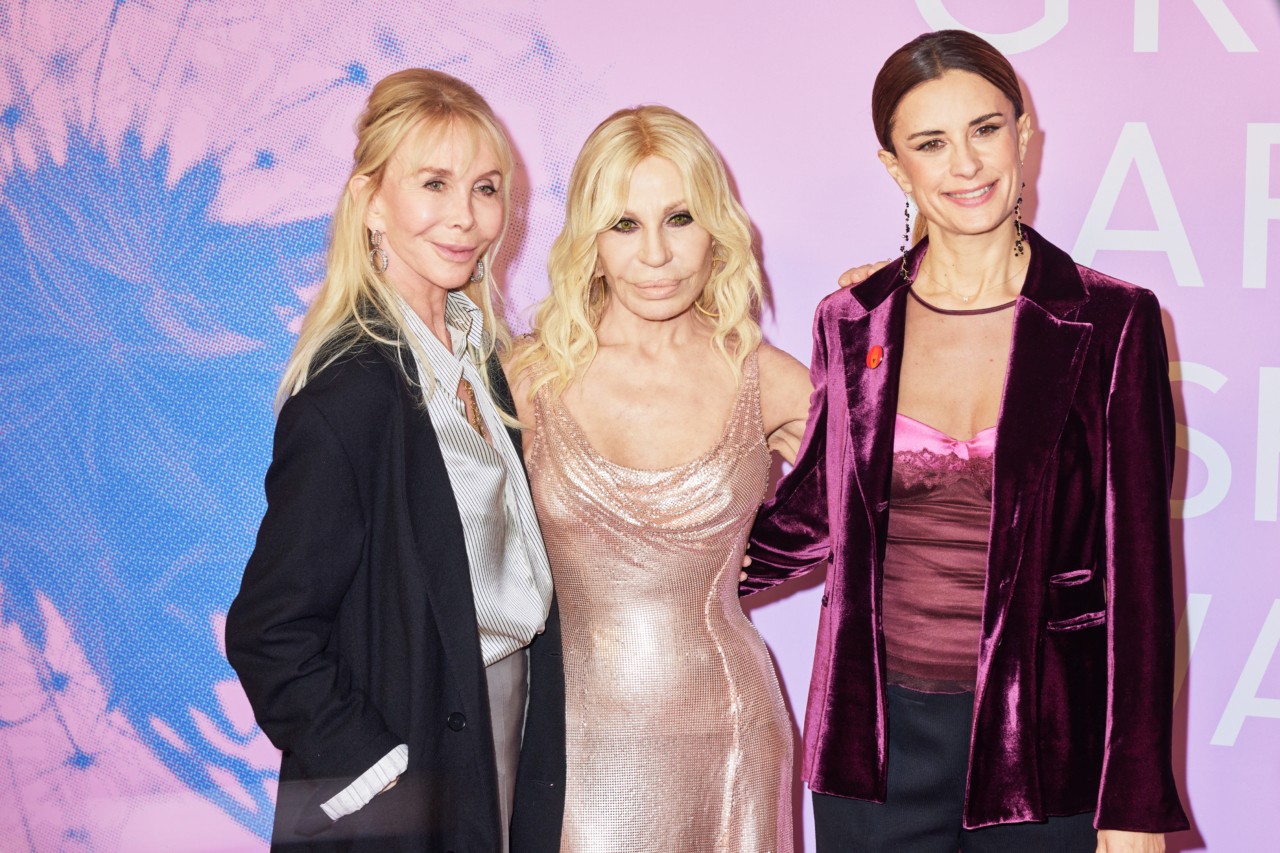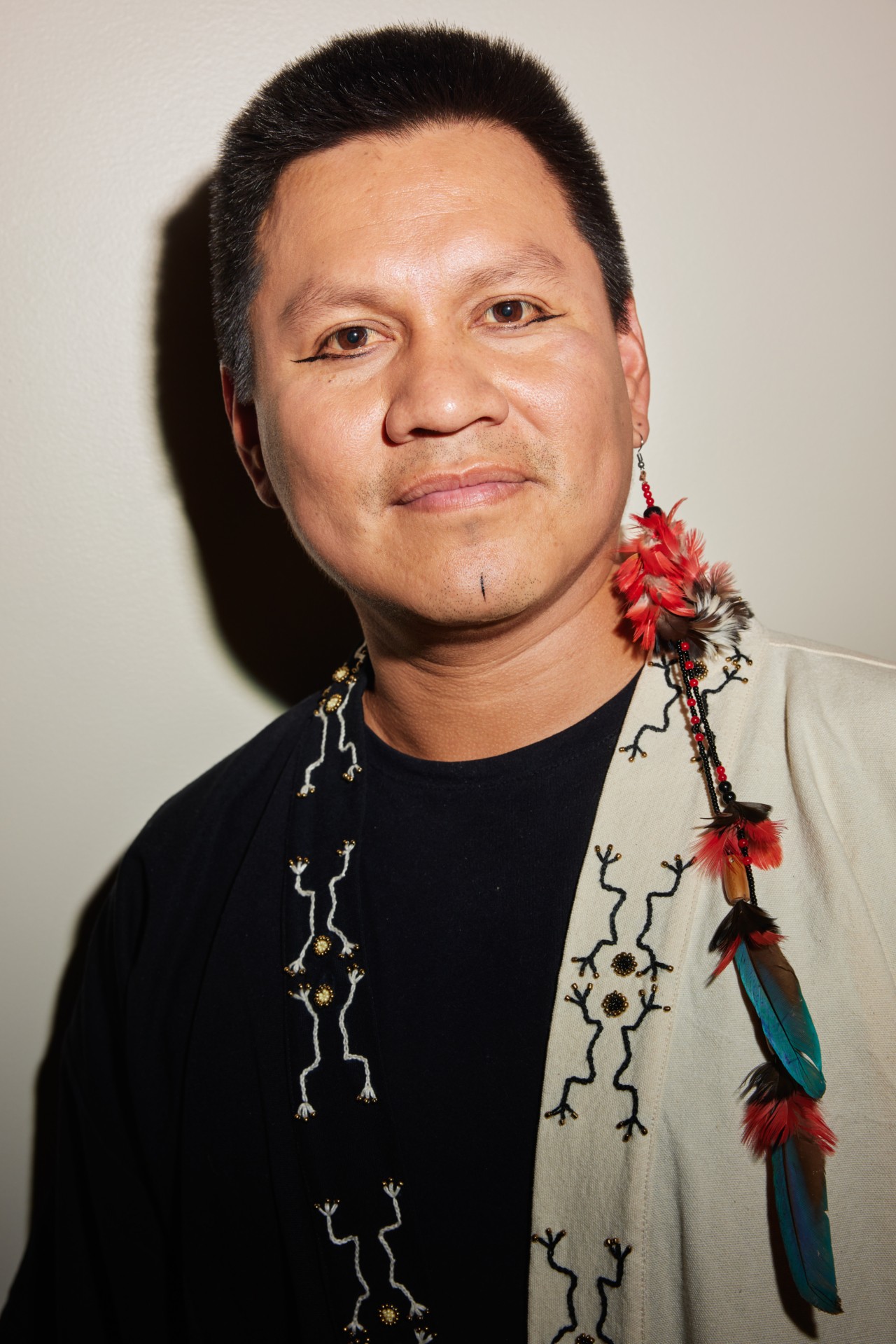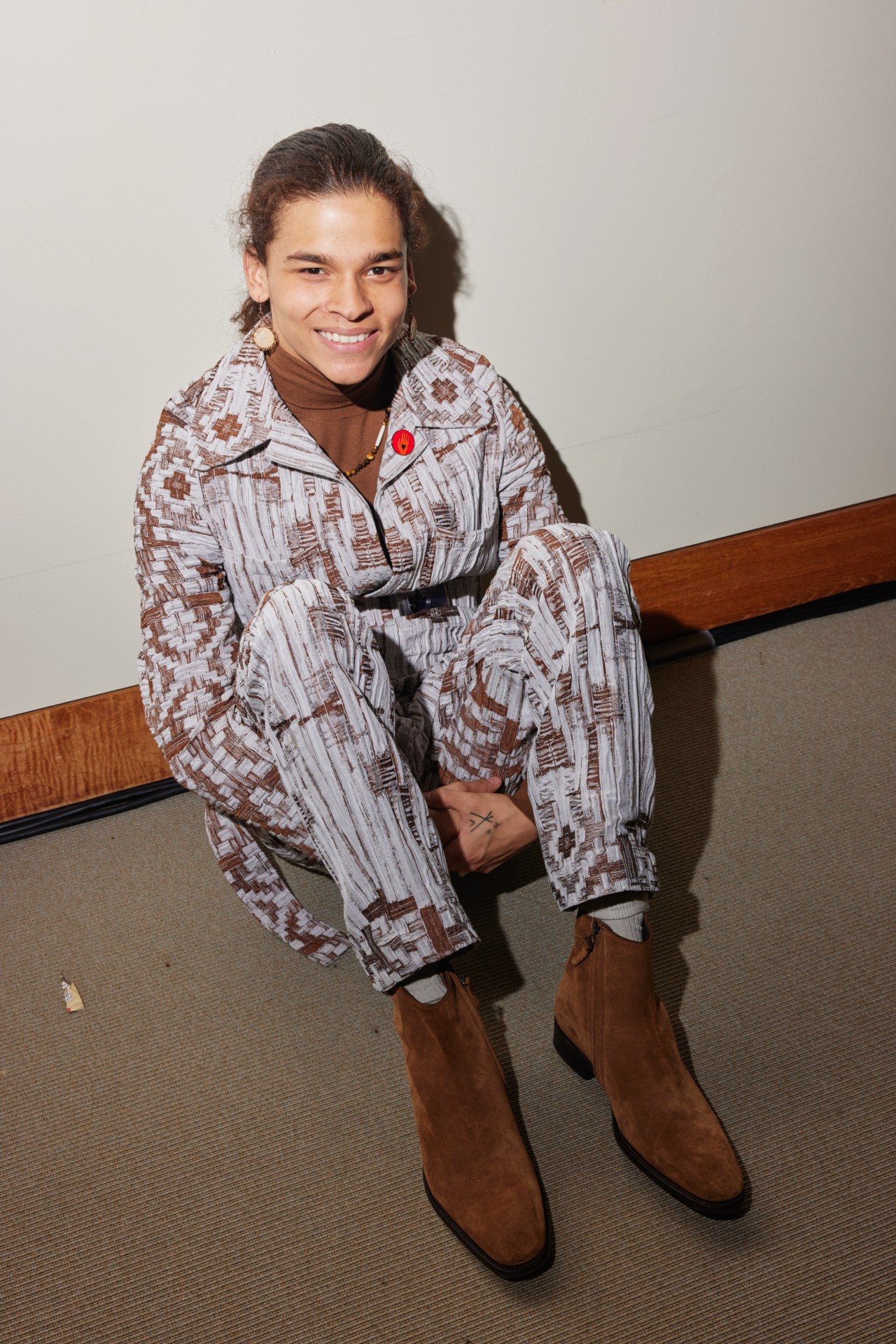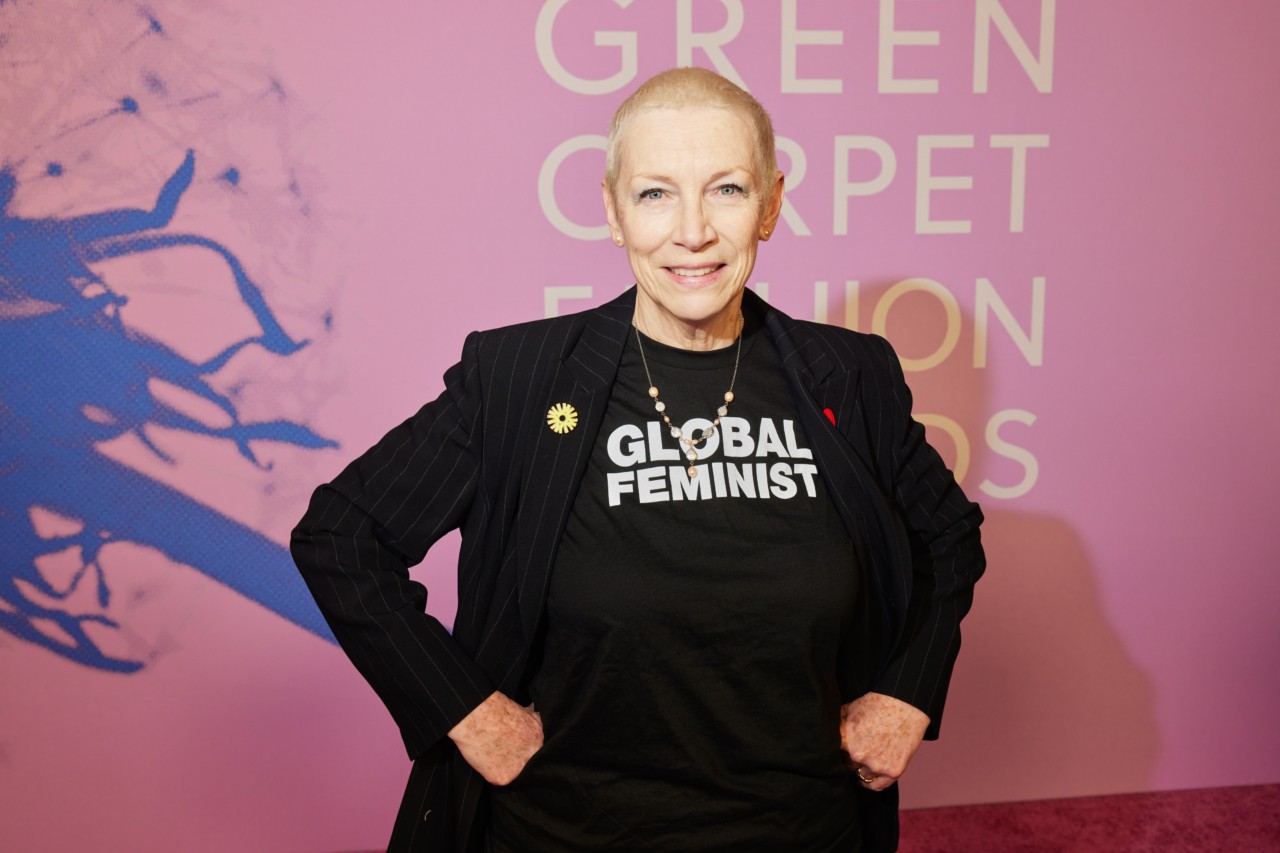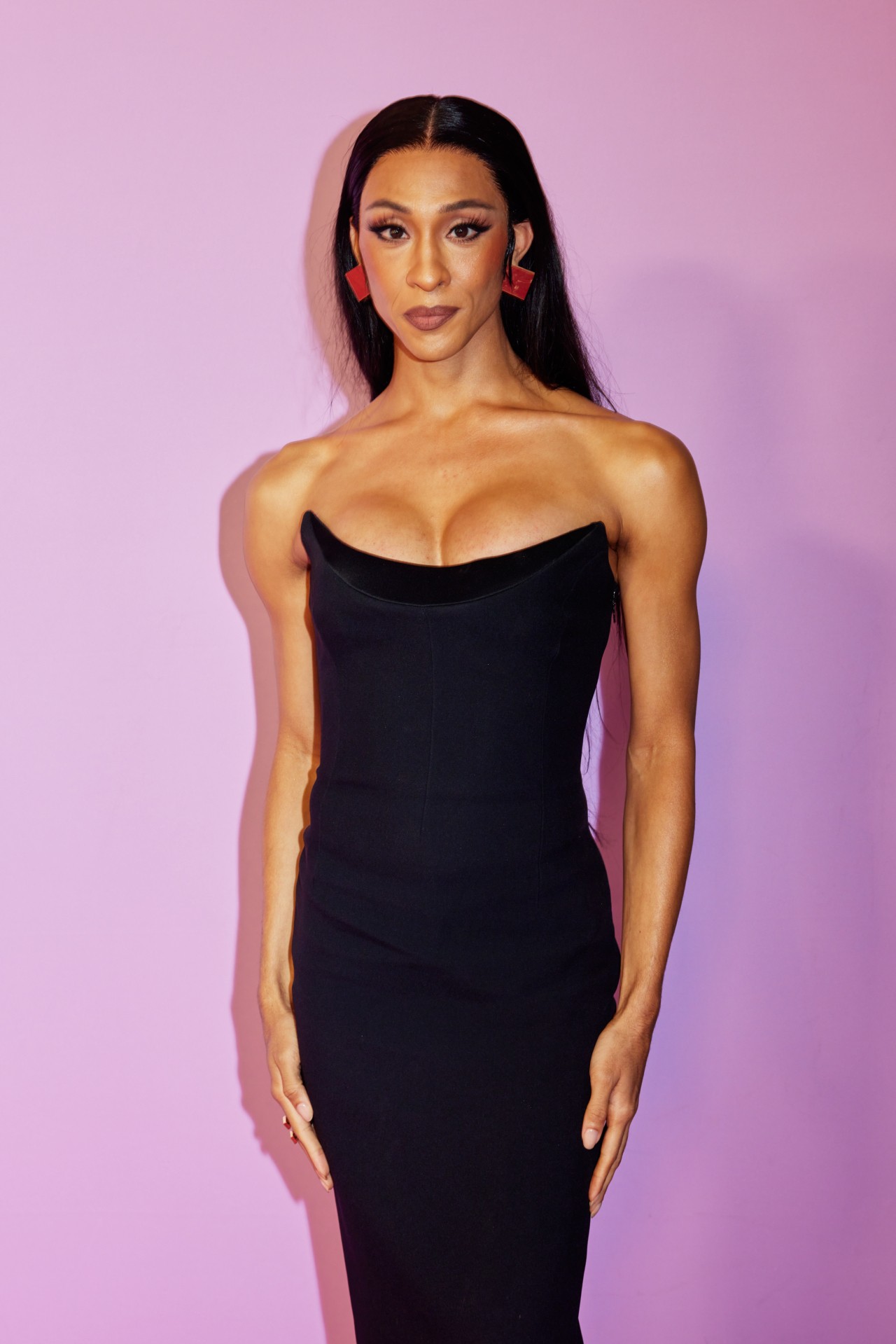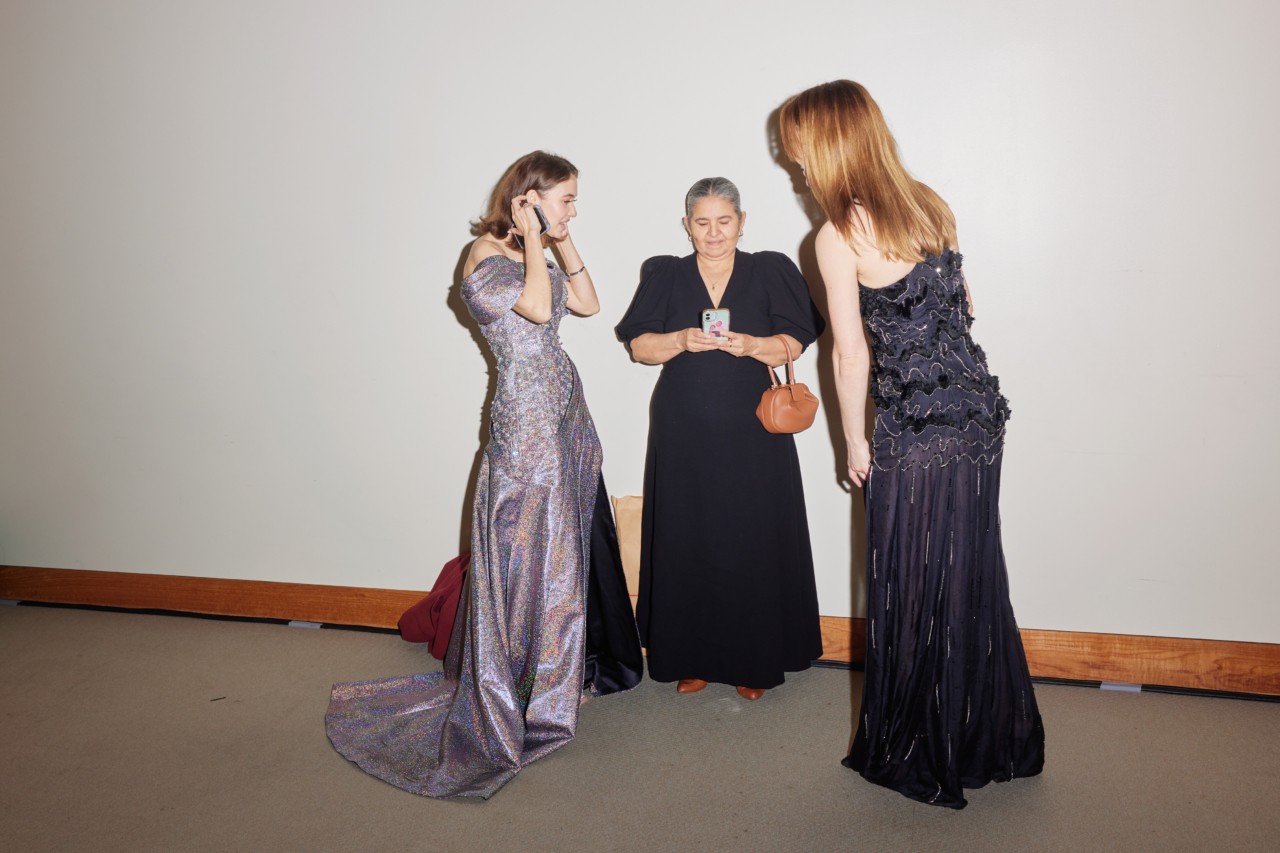

L-R: Aditi Mayer, Saad Amer, Kevin J. Patel, Leah Thomas, Rupi Kaur, Alexia Leclercq, Cameron Russell
Words by Sophie Benson
photographs by maggie shannon
Just a few days ahead of the Oscars, on Wednesday, March 6, celebrities including Zendaya, Cate Blanchett, and Amber Valletta will gather on a Los Angeles rooftop for a glamorous awards ceremony. But they won’t be taking home any shining statuettes. Instead, the spotlight will be keenly focused on activists and changemakers working at the intersection of environmental, social, and political change.
The Green Carpet Fashion Awards (GCFA) was founded by global sustainability agency Eco-Age to leverage the fashion and entertainment industry’s substantial power to create cultural change. A progression from the Green Carpet Challenge, which tasked stars with wearing sustainable looks on the red carpet, it started life as an annual event in Italy with the aim of spotlighting innovators and disruptors within the fashion industry. It went digital during the COVID-19 pandemic but after the lockdowns, Eco-Age decided it was time to muscle in on Hollywood’s award season calendar and divert some of the media hype in a more meaningful direction.
“Fashion has always been the perfect lens through which to look at the world and how we behave. Here we are in the Global North, getting dressed every day with clothes and accessories that impact the lives of millions of people in the Global South, from deforestation and Indigenous rights in the Amazon, to exploitation of garment workers in Bangladesh, and dumping of so called “second hand” clothes in Ghana or Kenya,” Eco-Age founder Livia Firth tells Atmos. “How to show the interconnectedness of it all; [to show] the intersectionality? With this in mind, we created the new format of the GCFA and decided to move it to LA. After years of [the] Green Carpet Challenge in Hollywood, I saw how being in LA, being on those awards season carpets or at the Oscars is the biggest communication platform of all.”
The global reach of Hollywood’s award season is astronomical. When Ellen DeGeneres took a selfie at the Oscars with fellow celebrity guests it became the most retweeted photo of all time (at the time), racking up two million retweets within the first two hours. In 2022 there were 22.7 million social media interactions during the ceremony, and in 2023 there were over 190,000 mentions of Best Picture alone on X (formerly Twitter) during the ceremony.



“I saw how being in LA, being on those awards season carpets or at the Oscars is the biggest communication platform of all.”
Firth considers the necessity of a celebrity presence at the GCFA to be unfortunate yet hugely important, noting a photo of Leonardo Di Caprio with the Minister of Indigenous Peoples of Brazil, Sônia Guajajara, at the 2023 awards. “It meant that Sônia’s work got catapulted globally to an audience that maybe wouldn’t have even known about it,” she said. This year Guajajara will act as co-chair alongside Firth, Cate Blanchett, Helen Hunt, Julianne Moore, Zendaya, Annie Lennox, and Vanessa Nakate.
Some might say it’s cynical to use the cult of celebrity as a trojan horse to draw attention to activists who should be known in their own right. But unfortunately, whether we like it or not, people are more likely to praise Jennifer Lawrence for eating pizza in a designer gown than they are an Indigenous leader for carefully stewarding their land for 30 years despite their rights being systematically eroded and their voices silenced. In its new guise, the GCFA selects six honorees according to six cultural archetypes: The Visionary, The Messenger, The Rebel, The Healer, The Sage, and The Futurist, as well as a cohort of Young Leader honourees. Firth describes them as individuals who can be “our North Stars” for the global issues that need urgent attention.
Honorees are chosen by young climate leaders including Aditi Mayer, Tori Tsui, and Leah Thomas, all of whom put intersectionality and social justice at the centre of their practice. In this way, they ensure the selection of honorees is not the westernized, whitewashed landscape that so often typifies climate coverage, but a truly representative cross section of activists and leaders from Indigenous groups and the Global Majority.
“The amplification is amazing. You can build allies and start creating or engaging with different communities that are also part of the solution,” says one of this year’s honorees Yurshell Rodríguez. “All of us must, should, will be part of this solution. It’s not just Afro-descendent people, Indigenous peoples, or Native peoples. The solution is all of us coming together.”
Below, Atmos meets four of the brilliant leaders honoured at this year’s GCFA:

Yurshell Rodríguez, a Young Leader honoree, is an Indigenous woman of the Raizal African-Caribbean Native ethnic group of the Archipelago of San Andrés, home to the third largest coral reef. “We’ve been living in these islands for more than 400 years… developing our culture and our respect to honor Mother Earth,” says Rodríguez. She and her family became homeless after a hurricane struck her homelands in 2005 when she was just 10 years old—and from that day on, she made the decision to protect her island community from the threat of climate breakdown, joining local ecological groups and eventually studying to be an environmental engineer. “It shaped everything for me,” she says.
Rodríguez’s work is multifaceted. In 2020, after Hurricane Iota tore through her home of Providencia Island, she became one of 25 young plaintiffs to sue the Colombian government to stop deforestation of the Amazon—and won. While she recognises the importance of “going where the decisions are made,” she is just as focused on her work with If Not Us Then Who, a storytelling platform for Indigenous Peoples and local communities.
“It’s not just Afro-descendent people, Indigenous peoples, or Native peoples. The solution is all of us coming together.”
“Everything that I do is connected with my heritage, and acknowledging the diverse communities that we have around the world,” she says. “All of us [Indigenous and Native peoples] as a whole have been stewarding the land. We have been guardians of the ecosystems, biodiversity, water, and it’s time for our voices to be heard and our ancestors’ knowledge to be taken into account to find climate solutions. [The climate crisis is] not only science-based or technology-based. It’s not even a money crisis—it’s a knowledge crisis of how to cohabitate and coexist with Mother Earth.”

“The rural backdrop [of my childhood] not only enriched my understanding of environmental interconnectedness but also cultivated a sense of stewardship,” says Ugandan activist and model Judith Heard, another of this year’s Young Leader honorees.
Beneath the glamorous façade of Heard’s social media—which she says plays a pivotal role in the toolkit of the modern activist—lies a deeper commitment to advocacy and protecting her home and community. “My fashion career and environmental activism are interconnected,” she says. “As Miss Elite Africa, I am determined to leverage my position to address critical issues. I’ve forged strategic partnerships with organizations like National Environmental Forestry Authority and National Forestry Authority, dedicated to supporting education for underprivileged children.
A focus on forestry-based initiatives underpins Heard’s efforts, as she sees the escalation of deforestation in Uganda as a critical environmental challenge. In the last 20 years alone, the country has lost over one million hectares of tree cover due to clearance for settlements and illegal logging, amounting to nearly a third of the national total. To rise to it, she launched 50 Million Trees for Africa. Just a few weeks before the GCFA, via her foundation, she planted over 10,000 signature fruit trees in partnership with a high school to connect conservation and education. Vitally, the project engages the community and involves them in the monitoring, assessment, and continuous care of all trees planted.
“My commitment is unwavering, I will use my title as Miss Elite Africa to continue my activism and make a tangible and lasting impact on the issues that resonate most with me and my community,” she says.

“No single issue exists in isolation and true liberation requires dismantling intersecting systems of oppression,” says self-described climate optimist and realist Kevin Patel.
In the sixth grade, Patel, who is also being honored as a Young Leader, helped open a school garden in LA to teach his peers how to grow food, having learned how to do so from his parents whose families had farmed in India for generations. Plugged into the need to act on injustices from an early age, Patel was then diagnosed with an irregular heartbeat, a condition he linked to local air pollution which further compounded his instinct to speak up.
“Growing up in Los Angeles, I witnessed firsthand the disproportionate impact of pollution and environmental injustices,” he says. “As a BIPOC activist, climate and environmental justice are deeply personal and professional priorities to me.”
Despite being overlooked, unheard, and encountering systemic issues within the environmental movement itself as he embarked upon his activism, Patel stayed on course, establishing the first Youth Climate Commission in the U.S. to amplify the voices of young activists. He then went on to launch OneUpAction International, which provides resources for marginalized youth by advocating for and fostering a network of over 10,000 young people. “I’m filled with gratitude for the opportunity to make a difference, and hopeful for the future we are collectively building,” says Patel. “It’s been a journey of self-discovery, resilience, and unwavering determination to make a difference.”

Angaangaq Angakkorsuaq’s family belongs to the traditional healers from Kalaallit Nunaat, Greenland. “I was born in a time when the big ice was not melting. It was a beautiful time. We knew exactly what would come in spring, summer, fall, winter. Now we simply do not know what will come of those four seasons,” says Angaangaq, who is being honored as The Visionary.
Greenland is described as ground zero for climate change in the northern hemisphere, and as his home changed around him, Angaangaq was given a spiritual task by his mother: melt the ice in the heart of man. “When we talk about climate change,” says Angaangaq, “we only talk about the Earth’s climate change. We don’t talk about the human climate change. How can anybody separate themselves from the climate change of Mother Earth?”
“When we talk about climate change, we only talk about the Earth’s climate change. We don’t talk about the human climate change. How can anybody separate themselves from the climate change of Mother Earth?”
Without rebuilding our human connections Angaangaq does not know how we will rehouse people as the sea levels rise or stop the ice from
melting. “We have never been so educated as we are now, and we still haven’t got to understand how beautiful people are… we have become so distant from each other,” he says. Now, at 77, he has travelled to over 70 countries as he undertakes his spiritual task. In a sector dominated by science, Angaangaq upholds the importance of simple human connections like touch and eye contact because, as his mother explained to him, “only by melting the ice in the heart of man will man change and begin to use this knowledge wisely.”
“The greatest need we have is to be united,” says Angaangaq.







Among the Celebrity Glitz, an Awards Ceremony With Meaning
